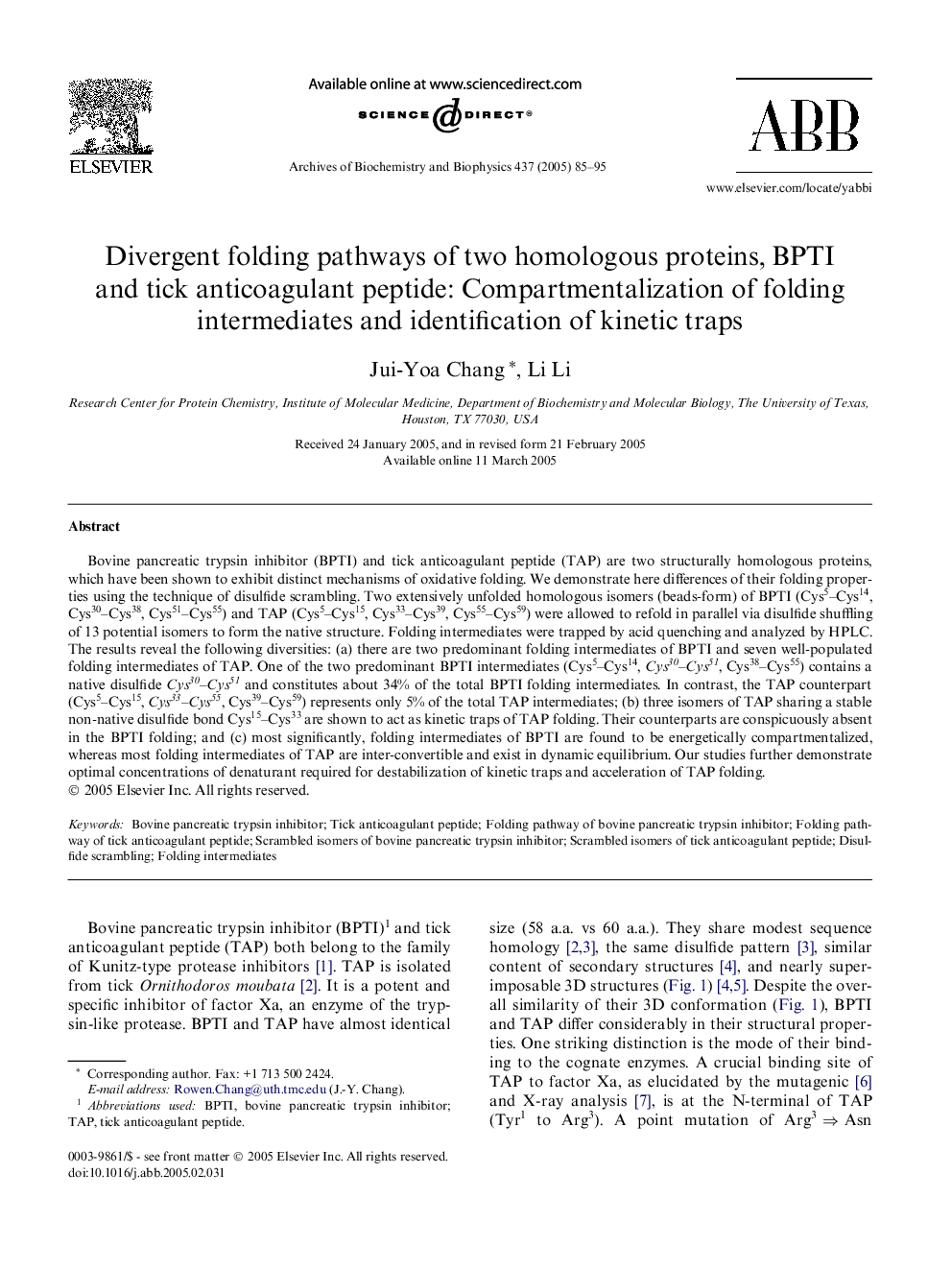| Article ID | Journal | Published Year | Pages | File Type |
|---|---|---|---|---|
| 9882235 | Archives of Biochemistry and Biophysics | 2005 | 11 Pages |
Abstract
Bovine pancreatic trypsin inhibitor (BPTI) and tick anticoagulant peptide (TAP) are two structurally homologous proteins, which have been shown to exhibit distinct mechanisms of oxidative folding. We demonstrate here differences of their folding properties using the technique of disulfide scrambling. Two extensively unfolded homologous isomers (beads-form) of BPTI (Cys5-Cys14, Cys30-Cys38, Cys51-Cys55) and TAP (Cys5-Cys15, Cys33-Cys39, Cys55-Cys59) were allowed to refold in parallel via disulfide shuffling of 13 potential isomers to form the native structure. Folding intermediates were trapped by acid quenching and analyzed by HPLC. The results reveal the following diversities: (a) there are two predominant folding intermediates of BPTI and seven well-populated folding intermediates of TAP. One of the two predominant BPTI intermediates (Cys5-Cys14, Cys30-Cys51, Cys38-Cys55) contains a native disulfide Cys30-Cys51 and constitutes about 34% of the total BPTI folding intermediates. In contrast, the TAP counterpart (Cys5-Cys15, Cys33-Cys55, Cys39-Cys59) represents only 5% of the total TAP intermediates; (b) three isomers of TAP sharing a stable non-native disulfide bond Cys15-Cys33 are shown to act as kinetic traps of TAP folding. Their counterparts are conspicuously absent in the BPTI folding; and (c) most significantly, folding intermediates of BPTI are found to be energetically compartmentalized, whereas most folding intermediates of TAP are inter-convertible and exist in dynamic equilibrium. Our studies further demonstrate optimal concentrations of denaturant required for destabilization of kinetic traps and acceleration of TAP folding.
Related Topics
Life Sciences
Biochemistry, Genetics and Molecular Biology
Biochemistry
Authors
Jui-Yoa Chang, Li Li,
